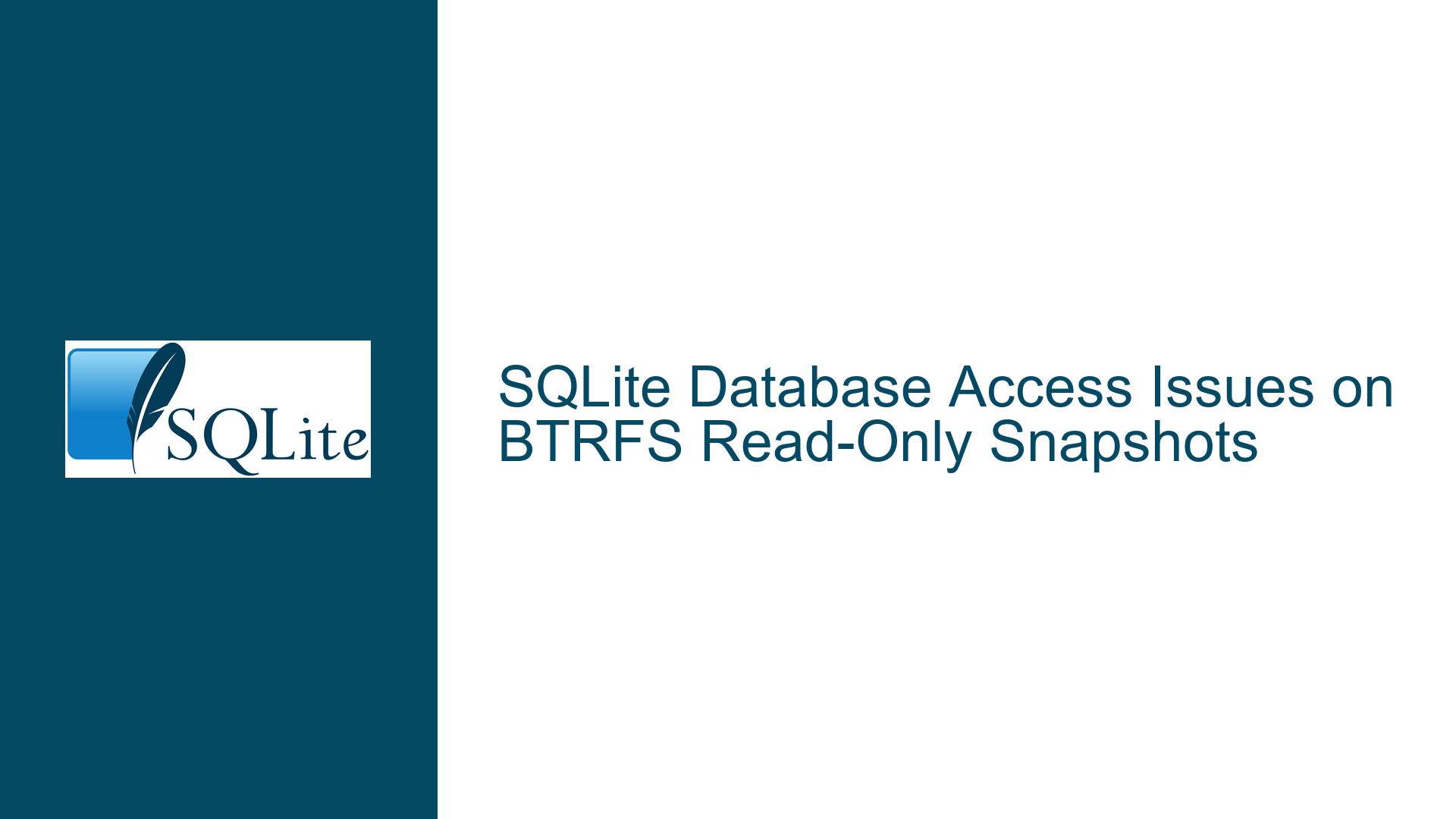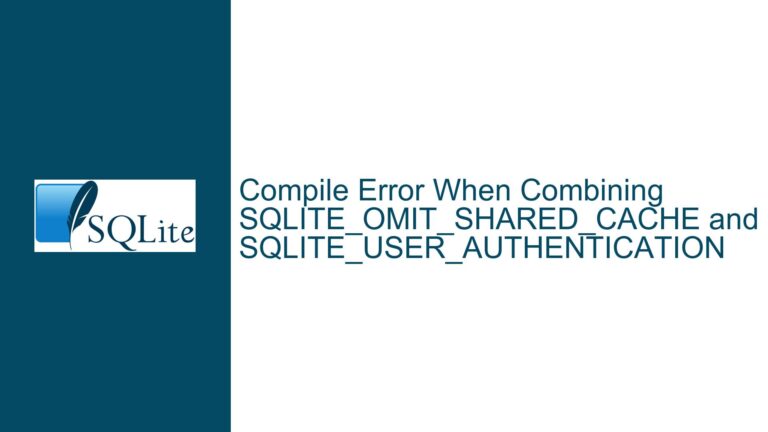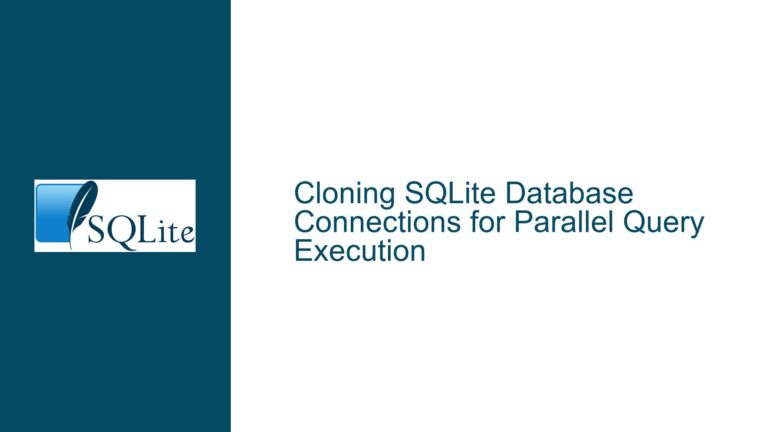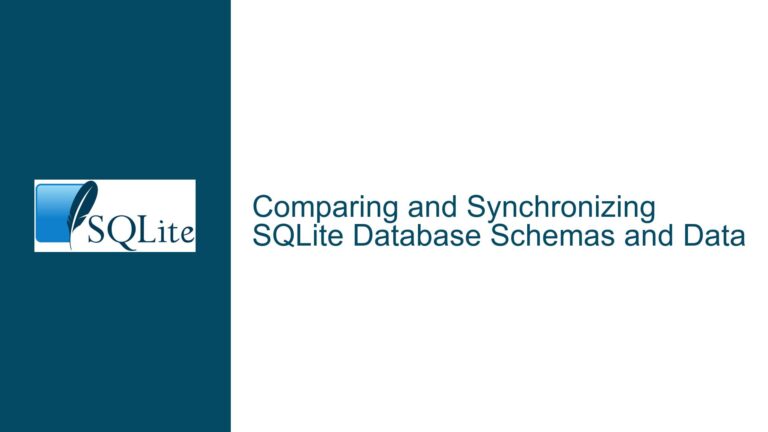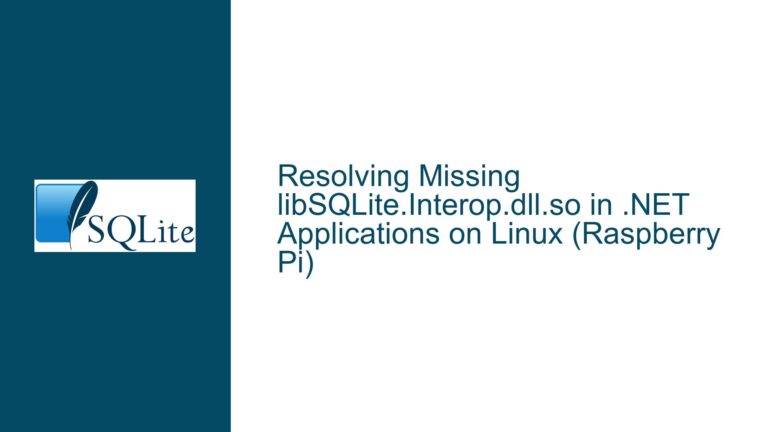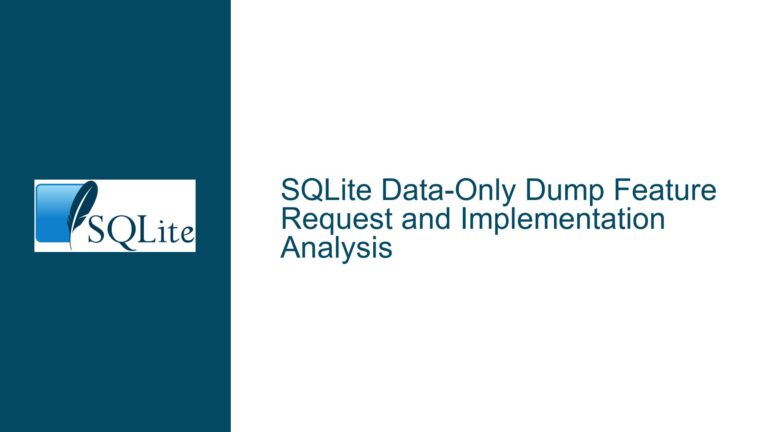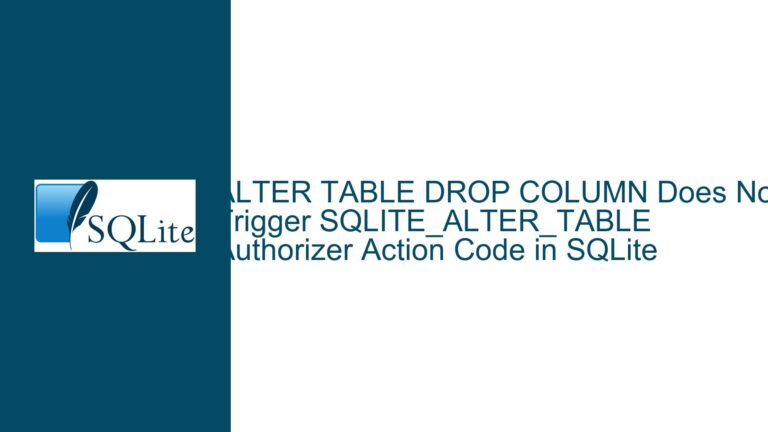SQLite Database Access Issues on BTRFS Read-Only Snapshots
SQLite Database Inaccessibility on BTRFS Read-Only Snapshots
When attempting to open an SQLite database file residing on a BTRFS read-only snapshot filesystem, users may encounter the error message "unable to open database file." This issue arises specifically when the database is accessed directly from the snapshot, whereas copying the database file to a different location allows it to be opened without any problems. Even attempting to open the database in read-only mode using the sqlite3 -readonly command does not resolve the issue. This behavior is particularly perplexing because the database file itself is not corrupted, as evidenced by its accessibility after being copied to a different filesystem.
The core of the problem lies in the interaction between SQLite’s transactional integrity mechanisms and the read-only nature of the BTRFS snapshot. SQLite employs several auxiliary files, such as journal files (-journal), Write-Ahead Logging (WAL) files (-wal), and shared memory files (-shm), to ensure data consistency and durability. These files are crucial for SQLite to manage transactions, especially in scenarios where a database might be in an inconsistent state due to interrupted operations. When a database is opened, SQLite may need to write to these auxiliary files or even the main database file to ensure that the database is in a consistent state. However, on a read-only filesystem, these write operations are prohibited, leading to the inability to open the database.
Interrupted Transactions and Journal File Dependencies
One of the primary reasons for the inaccessibility of the SQLite database on a BTRFS read-only snapshot is the presence of an interrupted transaction that requires the use of a rollback journal file. When a BTRFS snapshot is taken, it captures the state of the filesystem at a specific point in time. If the snapshot is taken during a transaction that has not yet been fully committed, the database file may be in an inconsistent state. In such cases, SQLite relies on the rollback journal to undo the partially written transaction and restore the database to a consistent state. This process involves writing to the main database file, which is not possible on a read-only filesystem.
The rollback journal file (-journal) is an essential component of SQLite’s transactional integrity mechanism. It records the original state of the database before any changes are made, allowing SQLite to roll back incomplete transactions in the event of a crash or power failure. When a database is opened, SQLite checks for the presence of a rollback journal file. If the journal file exists, SQLite assumes that the database might be in an inconsistent state and attempts to use the journal to restore consistency. However, if the filesystem is read-only, SQLite cannot write to the main database file to complete the rollback process, resulting in the "unable to open database file" error.
In scenarios where the database is in Write-Ahead Logging (WAL) mode, the situation becomes even more complex. WAL mode introduces additional files, namely the WAL file (-wal) and the shared memory file (-shm), which are used to manage concurrent read and write operations. The WAL file contains changes that have not yet been written to the main database file, while the shared memory file is used to coordinate access between multiple database connections. If the database is in WAL mode and the snapshot is taken while the database is in use, the WAL and shared memory files may be required to open the database. However, on a read-only filesystem, SQLite cannot create or modify these files, leading to the same "unable to open database file" error.
Resolving SQLite Database Access Issues on BTRFS Snapshots
To address the issue of SQLite database inaccessibility on BTRFS read-only snapshots, several strategies can be employed. The choice of solution depends on the specific requirements and constraints of the use case, such as the need for read-only access, the importance of data consistency, and the availability of storage resources.
One approach is to ensure that the database is in a consistent state before taking the BTRFS snapshot. This can be achieved by opening the database in read-write mode and performing a checkpoint operation, which flushes all changes from the WAL file to the main database file. Once the checkpoint is complete, the database can be safely snapshotted, as it will no longer require the WAL or shared memory files to be accessed. This method guarantees that the database is in a consistent state and can be opened in read-only mode without any issues. However, it requires that the snapshot be taken while the database is not in use, which may not always be feasible.
Another solution is to change the journaling mode of the database to one that is more compatible with read-only filesystems. For example, switching from WAL mode to rollback journal mode (PRAGMA journal_mode=DELETE) can simplify the process of accessing the database on a read-only filesystem. In rollback journal mode, SQLite uses a single journal file to manage transactions, which can be more easily managed on a read-only filesystem. However, this approach may not be suitable for all use cases, as it can impact the performance and concurrency of the database.
A more advanced solution involves using the Persistent WAL mode, which prevents the shared memory file (-shm) from being deleted during checkpoints. By keeping the shared memory file intact, SQLite can continue to access the database in read-only mode even on a read-only filesystem. This approach requires that all database connections set the Persistent WAL option, which can be achieved using the PRAGMA journal_mode=PERSIST command. However, this method may increase storage requirements, as the shared memory file must be retained alongside the database file.
In cases where the database must remain in WAL mode and the snapshot is taken while the database is in use, it may be necessary to mount the snapshot as read-write temporarily to allow SQLite to perform the necessary write operations. This can be done by creating a writable copy of the snapshot, opening the database to ensure consistency, and then remounting the snapshot as read-only. While this approach ensures that the database can be accessed, it may result in increased storage usage due to the creation of additional blocks that cannot be shared with other snapshots.
Finally, it is important to consider the broader context of the filesystem and its impact on database accessibility. BTRFS is a copy-on-write filesystem, which means that changes to files are written to new locations rather than overwriting existing data. This characteristic can lead to increased storage usage when snapshots are taken, especially if the database is frequently modified. To mitigate this, users should carefully manage their snapshots and consider using tools such as btrfs subvolume delete to remove unnecessary snapshots and free up storage space.
In conclusion, the inaccessibility of SQLite databases on BTRFS read-only snapshots is a complex issue that arises from the interaction between SQLite’s transactional integrity mechanisms and the read-only nature of the snapshot. By understanding the underlying causes and employing appropriate strategies, users can ensure that their databases remain accessible and consistent, even in challenging environments. Whether through pre-snapshot consistency checks, journaling mode adjustments, or temporary read-write mounts, there are multiple ways to address this issue and maintain the reliability of SQLite databases on BTRFS snapshots.
